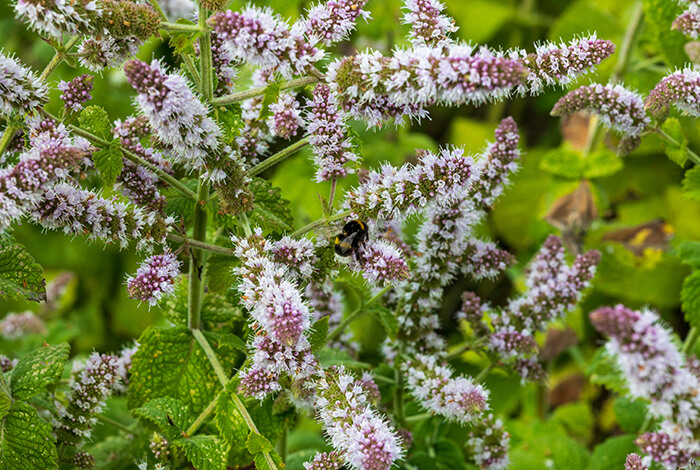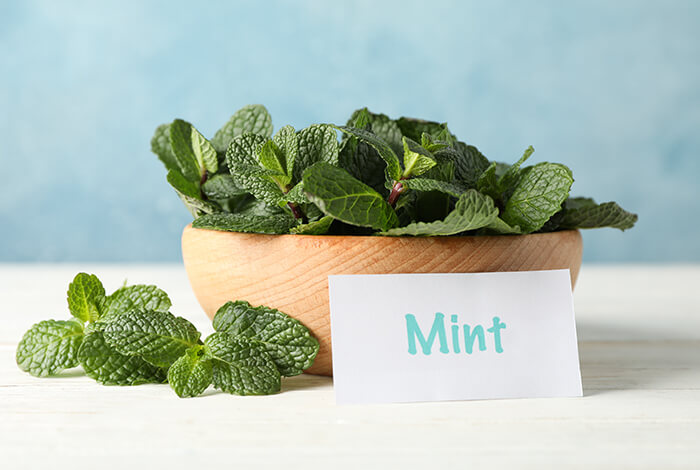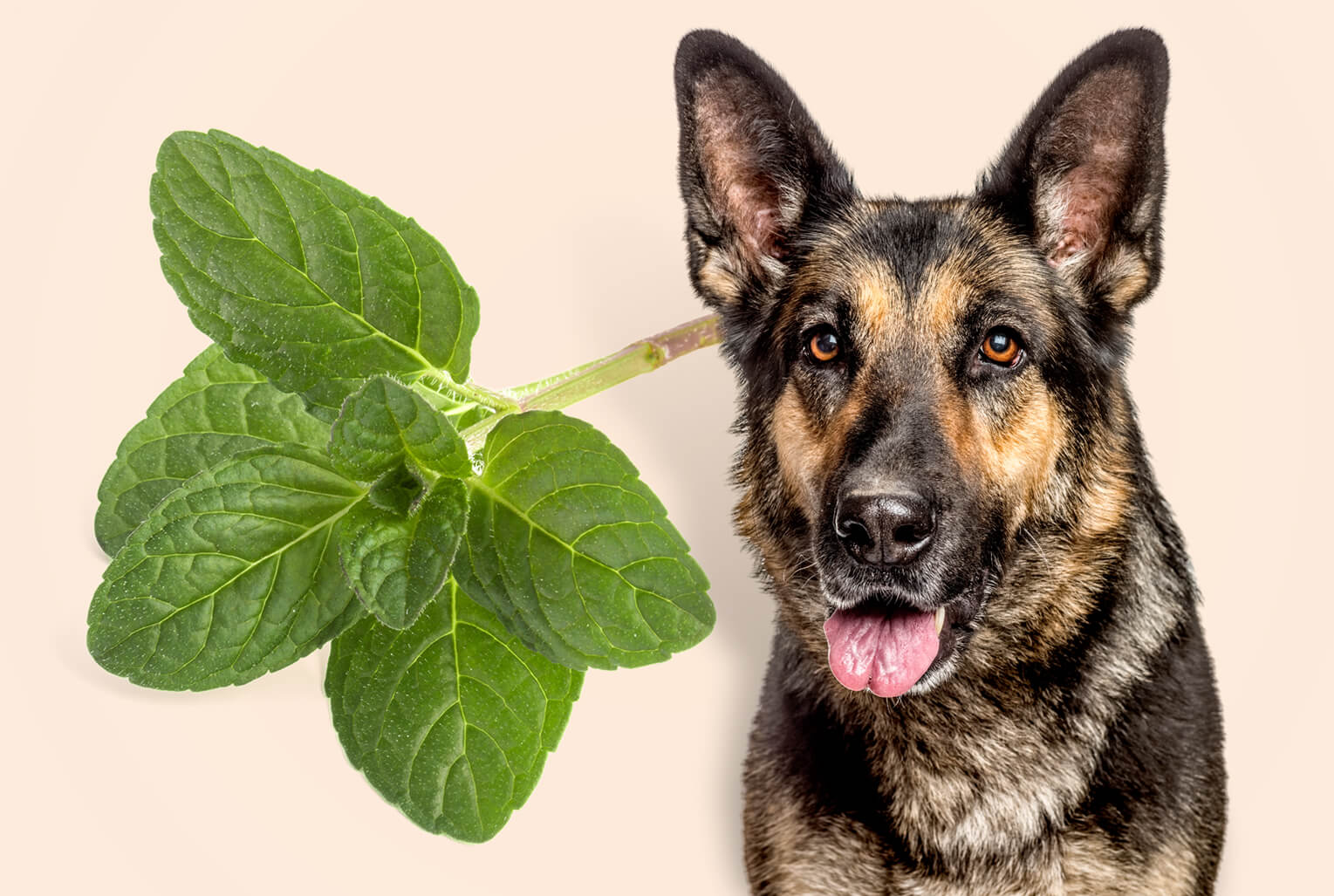Is mint toxic to dogs? Most species of mint are harmless to dogs and even offer a few health benefits, such as freshening their breath.
However, 2 varieties contain poisonous compounds, which pawrents should never make the mistake of feeding to their pet.
What Types of Mint Are Toxic to Dogs?

Pennyroyal (Mentha pulegium) is the only true mint species known to be poisonous to canines. It produces pulegone, which is a toxic chemical that is metabolized in the liver when ingested.
In mild cases, this compound can cause gastrointestinal problems, such as vomiting and diarrhea. Severe poisoning induces liver damage, which eventually leads to fatal liver failure if not given immediate medical treatment.
Pennyroyal is also reportedly used as an abortive medicine in humans. While not enough information is available about its effects on pregnant dogs, it would be best to keep expectant dams away from this plant.

Another toxic danger to dogs is wintergreen (Gaultheria procumbens). Many people mistake this plant for a true mint species because its leaves release a minty aroma when crushed.
In truth, wintergreen is categorized as being a part of the Ericaceae family. Its toxic principle is identified as methyl salicylate, which is a chemical related to aspirin.
If ingested in small amounts, it can cause GI upset and potentially intestinal ulcerations. Excessive doses may result in severe adverse reactions, such as tremors, seizures, and renal problems.
What to Do If My Dog Has Eaten a Toxic Mint Plant?

Gathering crucial information about the accident is critical in determining the next step to take. Find out the type of poisonous mint your furry pal has ingested and the estimated amount consumed.
Another important detail to know is the approximate time he has eaten the plant. Sharing this information with the vet helps them evaluate if your pet requires prompt medical treatment or only needs at-home supportive care.
Inducing vomiting is a common first aid advice for pet poisoning that has long circulated on the internet. However, pet owners should refrain from carrying out this procedure unless instructed by the veterinarian.
Professional assessment and guidance are necessary to ensure safe execution.
Inducing vomiting only applies to certain types of poisoning as toxicity caused by corrosive chemicals can severely damage the esophagus if the affected dog throws up.
Moreover, if the procedure is not performed correctly, life-threatening aspiration pneumonia may occur. It happens when vomit is inhaled into the lungs, causing the organ to become inflamed.
What Mint Varieties are Dog-Safe?

Most mint species belonging to the Lamiaceae family are safe for pooches to eat. Some common dog-friendly varieties you can add to your furry friend’s meals are:
- Applemint
- Peppermint
- Spearmint
- Watermint
- Wild mint
These herbs are good sources of antioxidants like vitamins A and C, which combat oxidative damage and strengthen the immune system.
Trace amounts of minerals like calcium, copper, iron, magnesium, and phosphorus can be also found in them.
The minty taste of mint plants aids in keeping dogs’ breath fresh and stink-free. They also produce rosmarinic acid, which possesses anti-inflammatory properties that can alleviate seasonal allergies.
How Much Many Leaves Can Dogs Have?

Dried and fresh mint leaves are safe for your dog to consume in minimal amounts. Adding 1 to 2 leaves into his dog food will not cause any harm.
Although mint is generally safe for canines, its fiber content becomes a gastric irritant when consumed excessively. Thus, remember not to go overboard to avoid upsetting your dog’s stomach.
What Other Risks to Watch Out For?

Numerous household items use mint as flavoring, including mouthwash, toothpaste, chewing gum, and tea. More often than not, these products also contain an artificial sugar substitute called xylitol.
This type of sweetener is extremely poisonous to dogs as ingesting only a minute amount of it can cause life-threatening adverse reactions like:
- Lack of body coordination
- Tremors
- Seizures
- Coma
- Hypoglycemia
In large doses, xylitol poisoning in dogs may induce deadly liver failure. Timely treatment is highly critical to ensuring the survival of the affected pet.
With this in mind, any mint-flavored household products must be stored in places inaccessible to your furry pal. Keep them on top shelves or locked cabinets so he does not get his paws on them.
FAQs About Is Mint Toxic to Dogs
1. Are Mint Plants Safe for Dogs?
Most mint plants are safe for dogs to eat, except for pennyroyal. This mint variety contains pulegone, which is observed to cause stomach problems and in severe cases, liver damage and failure. It can potentially cause miscarriage in pregnant dogs as well.
Watch out for the wintergreen plant too. It is often mistaken for a mint herb because it emanates the same scent.
Ingesting this plant is dangerous for canines due to the methyl salicylate it produces. This compound triggers GI issues like intestinal ulcerations and neurological issues, such as seizures.
2. What Happens If a Dog Smells Mint?
Fortunately, unlike some plant species, mint does not cause any adverse reactions upon inhalation. Hence, nothing harmful will happen to your dog if he smells the herb.
However, the plant’s scent might tempt your dog to take a bite of it. As long as the mint variety is pet-friendly, dangerous adverse reactions are highly unlikely, but be sure to look out for mild gastrointestinal upset.
3. Does Mint Ice Cream Cause Poisoning to Dogs?

Mint ice cream made for human consumption may cause poisoning to dogs. However, the root of the toxicity is not the presence of mint in this human food but the use of xylitol.
It is a common sugar substitute with highly poisonous properties for canines. Consuming this artificial sweetener even in minute quantities may lead to fatal consequences, such as seizures, hypoglycemia, and liver failure.
Dogs experiencing xylitol poisoning must be sent to an animal clinic right away for treatment. Any delays will significantly reduce the likelihood of a positive prognosis.
4. Can My Dog Eat Mint Oil?

No, mint essential oil, especially in its undiluted form, is extremely toxic to dogs because it contains volatile compounds. Ingestion, inhalation, or direct contact with it can result in poisoning.
If you have mint essential oil at home, make sure to store it properly to keep your pet from accidentally ingesting it.
Conclusion
Most species of mint plants are safe for dogs to consume in moderation. However, pennyroyal and wintergreen should never be given to pooches since they possess toxic properties.
Consuming them can trigger alarming health issues like liver damage and miscarriage.

